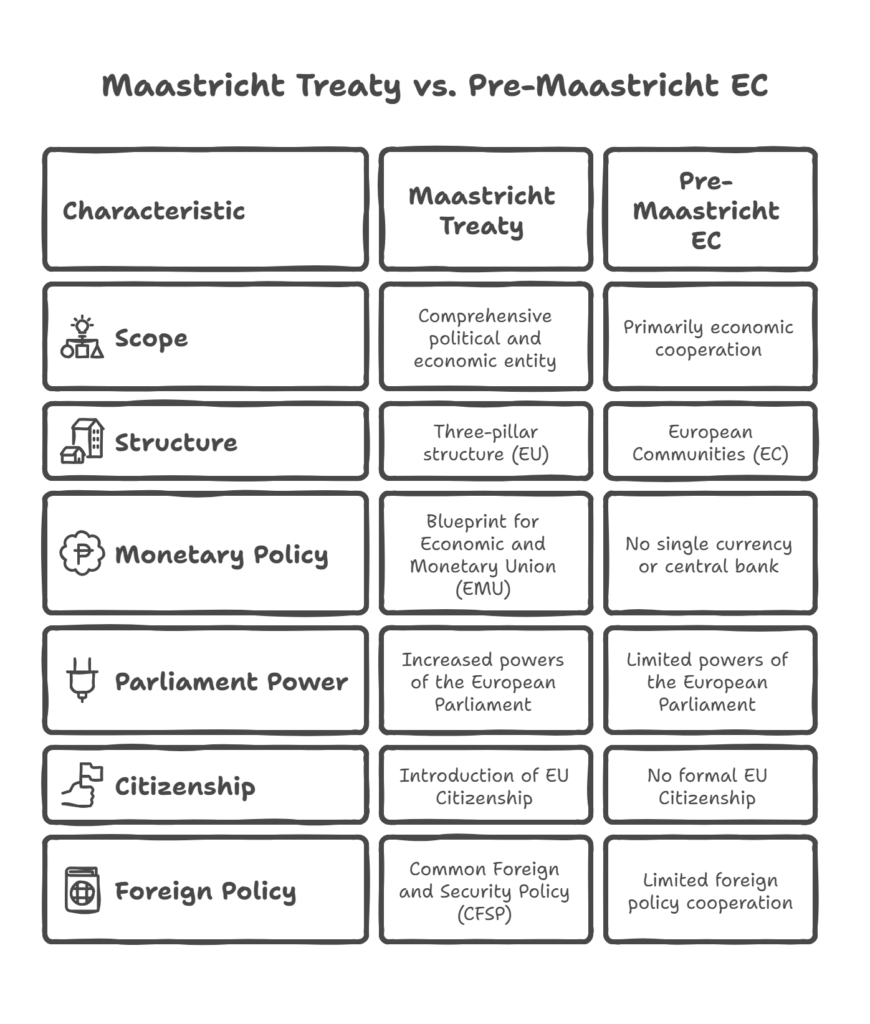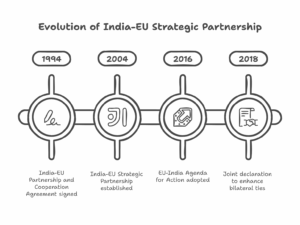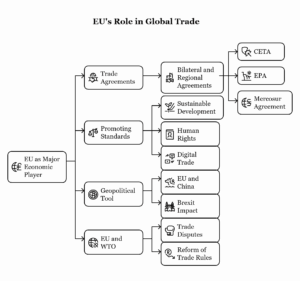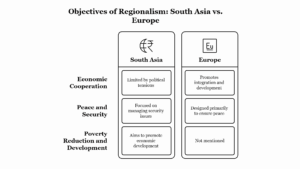The Maastricht Treaty, officially known as the Treaty on European Union (TEU), signed on 7 February 1992 and entered into force on 1 November 1993, is widely regarded as a transformative milestone in the historical trajectory of European integration. It marks the formal birth of the European Union (EU) and significantly broadened the scope of cooperation among member states beyond economic integration to include political, social, and foreign policy dimensions.
1. Foundational Significance
The Maastricht Treaty represents the constitutional moment of the European Union. Before 1993, the regional grouping was known as the European Communities (EC), primarily focused on economic cooperation, such as in the case of the European Economic Community (EEC). With Maastricht, the European Union was born as a more comprehensive political and economic entity.
The Treaty introduced a three-pillar structure:
- Pillar One: European Communities (EEC, ECSC, Euratom) focusing on supranational policy areas.
- Pillar Two: Common Foreign and Security Policy (CFSP), introducing intergovernmental decision-making in foreign affairs.
- Pillar Three: Justice and Home Affairs (JHA), aimed at cooperation on asylum, immigration, and criminal justice.
This tripartite framework laid the foundation for a hybrid governance model, combining supranational and intergovernmental elements, thereby offering a more flexible and differentiated integration process.
2. Introduction of the Euro and Economic and Monetary Union (EMU)
One of the treaty’s most significant contributions is the blueprint it established for the Economic and Monetary Union (EMU). The Maastricht Treaty laid down convergence criteria for member states to qualify for participation in a single currency, eventually leading to the launch of the euro in 1999 and its circulation from 2002 onwards.
The EMU also institutionalised the European Central Bank (ECB) and coordinated monetary policies across the eurozone. As such, Maastricht stands as the cornerstone of Europe’s monetary integration, fostering economic stability, predictability, and interdependence among EU economies.
3. Institutional Reforms and Democratization
The Maastricht Treaty enhanced the institutional structure of the European Union by increasing the powers of the European Parliament through the introduction of the co-decision procedure (now the ordinary legislative procedure). This legislative reform aimed to democratize EU governance by giving directly elected representatives more say in the law-making process alongside the Council.
Moreover, the treaty created the Committee of the Regions and the position of the European Ombudsman, strengthening participatory democracy and increasing transparency and accountability within EU institutions.
4. EU Citizenship and Fundamental Rights
Another key innovation of the treaty was the introduction of EU Citizenship. Any person holding the nationality of a Member State automatically became a citizen of the Union. This citizenship conferred new rights and freedoms, including:
- The right to move and reside freely across Member States,
- The right to vote and stand as a candidate in local and European elections,
- The right to diplomatic and consular protection outside the EU.
This development marked a shift from a purely market-oriented community to one with a more pronounced social and civic character.
5. Political and Foreign Policy Integration
Through the Common Foreign and Security Policy (CFSP), Maastricht brought foreign policy cooperation to the forefront. While the CFSP remained intergovernmental in nature, it provided a platform for coordination of diplomatic strategies, conflict prevention, and crisis management — essential for the EU’s role as a global actor.

Conclusion
In summary, the Maastricht Treaty serves as a watershed moment in the history of European integration. By expanding the scope of cooperation beyond economic issues to include political union, foreign policy coordination, and social rights, it laid the groundwork for the modern European Union. Maastricht transformed the EC from a functional economic bloc into a politically ambitious union, reflecting both deepening and widening of integration.








Leave a Reply